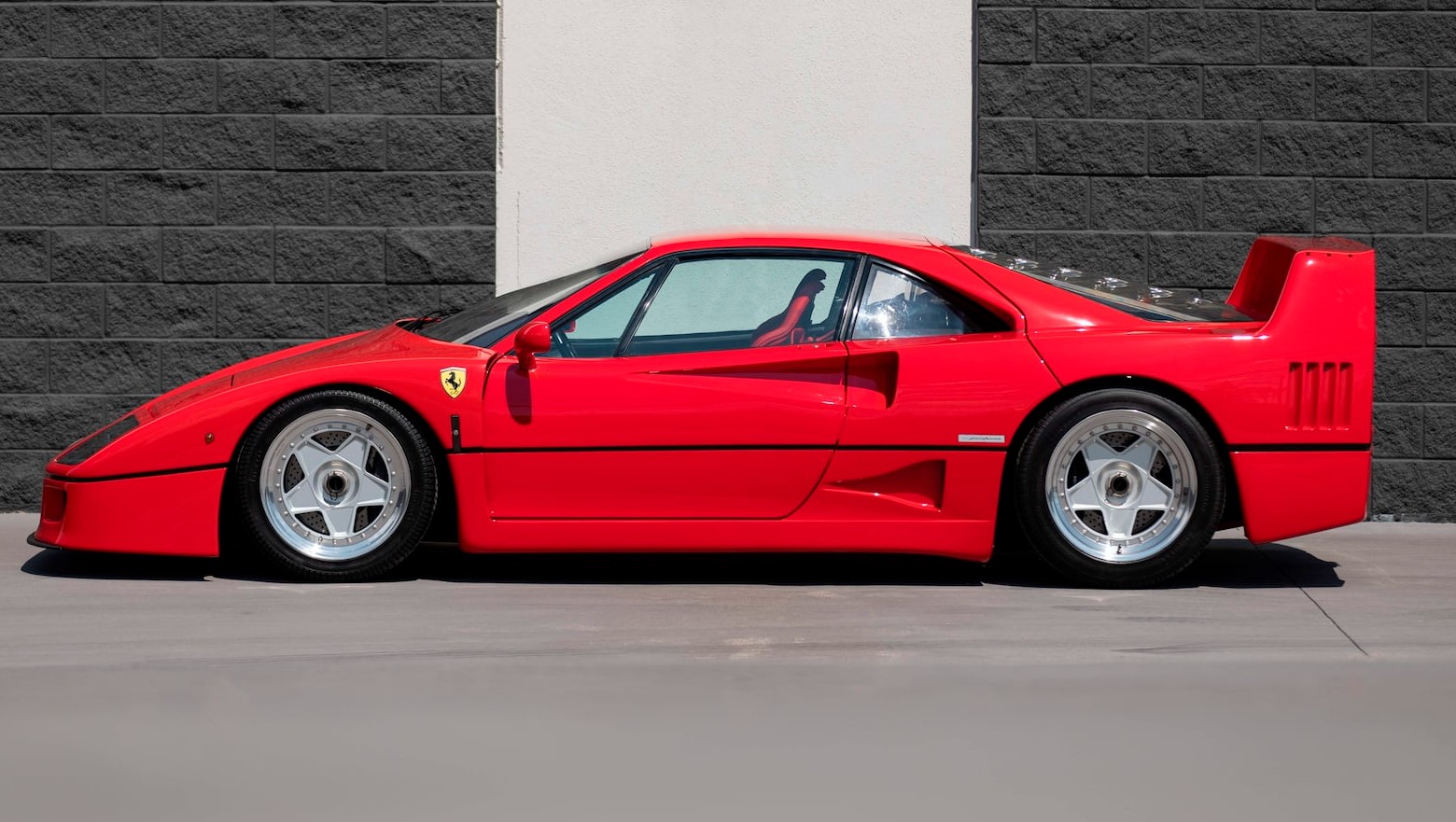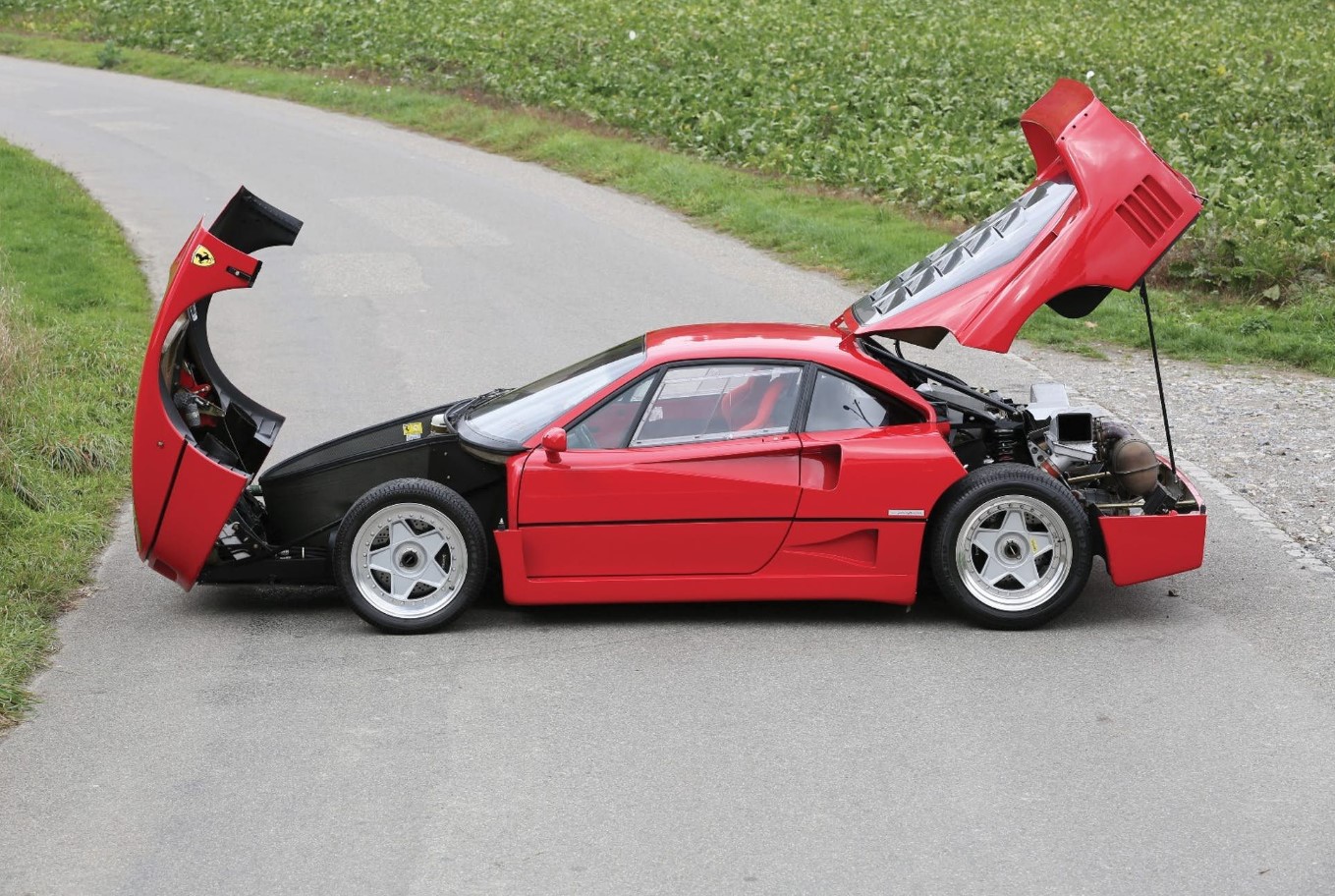
New Ferrari F40 2024: Pricing, Interior, Engine & Full Specs! Even though it made extensive use of racing car technology and would later compete in its LM and Competizione incarnations, the F40 was a road vehicle, first and foremost, unlike the 288 GTO, which had been built with Group B in mind. The F40 was officially created to commemorate Ferrari’s 40th anniversary, but it was an Italian salute of two fingers to the Porsche 959.
It served as the 288 GTO’s successor and was the final Ferrari vehicle that Enzo Ferrari personally approved. The 288 GTO was also engineered by Materazzi and created to commemorate Ferrari’s 40th anniversary. It was Ferrari’s fastest, most potent, and most expensive vehicle available for purchase at the time.
The Ferrari F40 Design & Specs
Pietro Camardella created the F40’s body while working under the direction of Aldo Brovarone, who will shortly retire. In the meantime, Nicola Materazzi improved the car’s engine, transmission, and other mechanical components to make them safe for the road. The 288 GTO Evoluzione, from which the F40 derives many aesthetic aspects, provided solid validation.
Enzo Ferrari requested that the automobile be finished in a brisk 11 months from the start of the project on June 10 and unveiled in the summer of 1987. He permitted Materazzi to select each engineer on the team for this purpose. Some of the car’s development, notably the bodywork, was done by other businesses with expertise in rally and racing preparation, like Michelotto Automobili (Stratos, GTO Evo, subsequently 333SP, 348, 355, 360, 430, 458).
Suspension, Torque & Power
The IHI four-stroke 90-degree twin-turbocharged intercooler V8 engine used in the 288 GTO was enlarged and had a high revving displacement of 2,936 ccs (2.9 L; 179.2 cu). According to the manufacturer, this engine’s maximum power output was 478 PS (471 hp; 352 kW) at 7,000 rpm, and its maximum torque was 577 Nm (426 lb-ft) at 4,000 rpm.
The cars had different gearing, torque curves, and real power output. Catalytic converters were optional on the F40 until 1990, when US regulations made them necessary for emissions control. The middle pipe transports gasses discharged from the wastegate of the turbochargers, while the flanking exhaust pipes direct exhaust gasses from each bank of cylinders.

| Brand | Ferrari |
| Model | Ferrari F40 |
| Release Date | 1992 |
| Price USA | $700,000 to $900,000 |
| Engine | Type & Size: 2.9L Twin-Turbo V8; Horsepower: 720 hp at 7,500 RPM; Transmission: 5-speed; O-60 mph: 3.1 seconds. |
| Interior | The gallery includes photos of the driver and passenger seating, dashboard, navigation, and cargo areas. |
Ferrari F40, 1991 (US Spec)
Although many components were upgraded and settings were altered, the suspension setup was similar to the GTO’s double wishbone setup. The unusually low ground clearance led Ferrari to include the capability to raise the vehicle’s ground clearance. When necessary for later cars via hydraulic lift chambers in the front dampers.
The Ferrari F40 Interior & Exterior
Pininfarina created a whole new body, using Kevlar, carbon fibre, and aluminium panels for strength, lightness, and extensive aerodynamic testing. Adopting windows and a windshield made of polycarbonate plastic significantly reduced weight. Despite lacking a sound system, door handles, a glove box, leather trim, carpets, or door panels. The cars did feature some air conditioning. The first 50 vehicles had wind-down windows, whereas later vehicles had sliding Lexan windows.
Technically, all vehicles were left-hand drive and painted “Rosso Corsa” when they left the factory. The Sultan of Brunei received at least seven customized vehicles delivered in right-hand drive. Paolo Garella, prototype manager at Pininfarina, was hired by the Sultan to modify the vehicles (colour, power, interior comforts). The forced induction engine produced a lot of heat; therefore, cooling was crucial.
The result was that the car had a body and looked somewhat like an open-wheel racing vehicle. Although it had a second undertray with diffusers behind. The engine and a partial undertray to smooth airflow beneath the radiator, front section, and cabin. The engine bay was not completely sealed. Cd=0.34 is the drag coefficient.
Tires
A new tire had to be great to handle the vehicle’s increased power. Which was generally only found in racing cars and was 80 bhp more than the 288 GTO. Materazzi drew on his positive working relationship with Pirelli’s head of development, Mario Mezzanotte. Whom he had known since the Lancia rallying days. After learning from the Formula 1 season from 1980 to 1985. Pirelli developed a carcass using lightweight materials (including Kevlar) and uneven tread patterns to build the P-Zero, particularly for the F40.
Ferrari F40 Release Date
Ferrari F40 Release On July 21, 1987, in the Civic Center in Maranello, the F40 was unveiled. Materazzi said the unveiling was originally scheduled for the Frankfurt auto show. But FIAT had to exhibit the Alfa Romeo 164 there, and the two events would have conflicted. Due to Enzo Ferrari’s request, the introduction was delayed by more than two months.